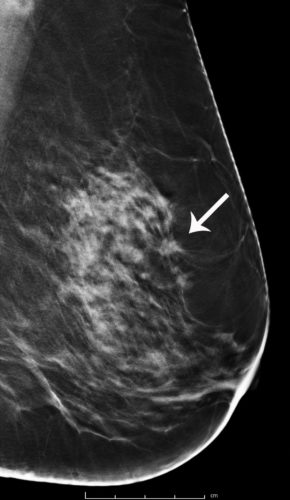Book Your Screening Mammogram
 With the advancement of technology in mammography, the breast cancer detection rate has increased significantly. However, with standard two-dimensional mammography, there are still pitfalls that create unnecessary costs and inconveniences to patients and hospitals. These limitations especially affect patients with dense breasts, for which two-dimensional mammograms have a harder time providing clear pictures.
With the advancement of technology in mammography, the breast cancer detection rate has increased significantly. However, with standard two-dimensional mammography, there are still pitfalls that create unnecessary costs and inconveniences to patients and hospitals. These limitations especially affect patients with dense breasts, for which two-dimensional mammograms have a harder time providing clear pictures.
Benefits of 3D Mammography
Numerous studies have demonstrated that tomosynthesis is better in identifying breast cancer, proving that it is a more effective mammography method. Instead of using a single low-energy X-ray for each view (as done in standard mammography), tomosynthesis uses several low-dose X-rays obtained from different angles. As a result, tomosynthesis gives a three-dimensional picture, as opposed to a two-dimensional image provided by standard mammography.
In mammography, the X-ray reveals most lesions and calcifications, but it is difficult to distinguish whether or not they are benign (non-cancerous). If there is a chance an area is not benign, the patient is called back to the hospital for additional tests, which may include a diagnostic mammogram, ultrasound, and in some patients, biopsy (extracting a sample of tissue for analysis). When the area identified is not cancerous, it means that the mammogram gave a false positive for breast cancer. At this point, a considerable amount of the patient’s and doctor’s time, hospital resources, and money have been used to perform tests that ultimately provide no benefit to the patient’s health.
In tomosynthesis, abnormalities can be identified as benign or suspicious in smaller layers of tissue, resulting in far fewer callbacks for patients. A decrease in callbacks from 15 – 40% has been reported, when using this new mammography method. Since shadows and distortions are reduced, tomosynthesis makes it much simpler for radiologists to identify the inner structure of breasts, greatly improving the imaging of dense breast tissue. These improvements have been shown to increase the cancer detection rate in every 1,000 patients from 9 – 27%.
Numerous studies have shown that for many women, tomosynthesis is the best option for mammography. However, because it is a relatively new method of imaging, it is not currently the standard and is not available in all health systems. Baystate Health believes in serving its patients with the best technology available and now offers tomosynthesis at many sites, contributing to its exceptional patient care.
Book Your 3D Screening Mammogram
